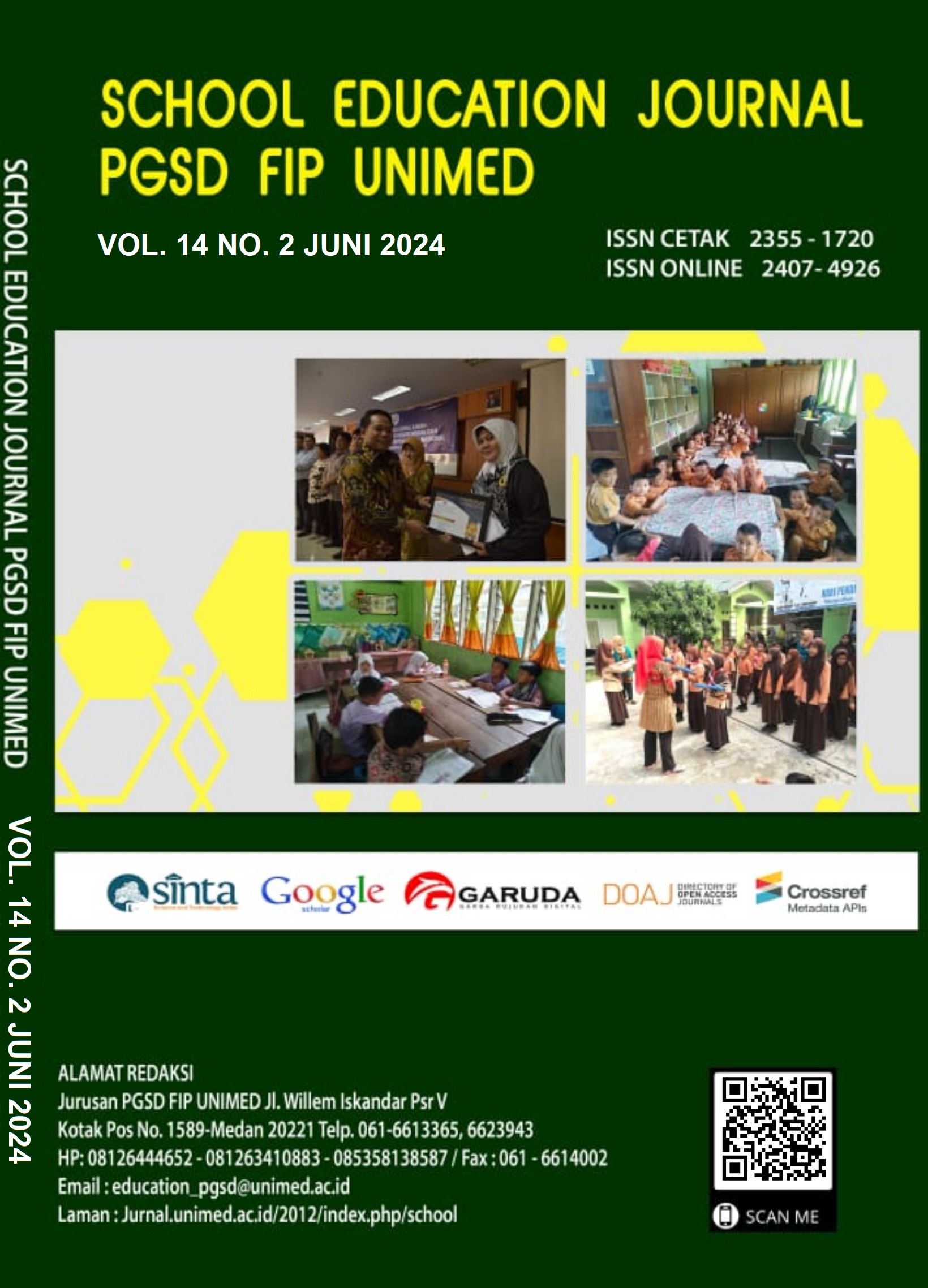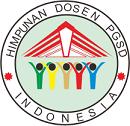THE EFFECT OF FLIPPED CLASSROOM INTO FOCUS GROUP DISCUSSION IN SPEAKING SETTING CLASSROOM
DOI:
https://doi.org/10.24114/sejpgsd.v14i2.58716Keywords:
Group Speaking Discussion Method, Conversation, Challenging ActivityAbstract
This study deals with the Effect of Flipped Classroom into Focus Group Discussion in Speaking Setting Classroom. The researcher took this method by expecting that students would be more active in communication and doing great speaking with their teacher and friends in learning English. This study was conducting by using experimental and control class and it took 68 (sixty eight) total students of SMAS Budi Agung Medan as sample. They were divided into two groups, they were 37 students were taken as experimental group and by the effect group discussion in speaking, 31 students were taken as control group by flipped classroom method-centre learning by teacher. The instrument of this study was making the sentences they could by paying attention the grammar, pronunciation, fluency, comprehension and vocabulary. The result of the t-test showed that the t-observed was higher than t-table (1.280>1.279). Group speaking method gave a significant effect on the students™ speaking. In order it is possible to make that the students' speaking enhanced as a result of the group discussion. The effect of speaking method in the students' flipped classroom performed better than the usual approach (TCL). Discussions in groups were of a lot of relaxing, cheerful, and challenging activities that make it difficult for students learn spoken English in the classroom.References
Akçayır, G., & Akçayır, M. (2018). The flipped classroom: A review of its advantages and challenges. Computers & Education, 126, 334-345. doi:https://doi.org/10.1016/j.compedu.2018.07.021
Arifin, M., Eryani, I., & Farahtika, G. (2023). Students™ Perception of Using Moodle as a Learning Management System in Tertiary Education. Al-Ishlah: Jurnal Pendidikan, 15(4), 5140-5152. doi:https://doi.org/10.35445/alishlah.v15i4.3855
Burak, A., & TuÄŸba, Y. Y. (2018). The Effect of Flipped Classroom Model on StudentsŸ Classroom Engagement in Teaching English. International Journal of Instruction.
Grim, B. J., Harmon, A. H., & Gromis, J. C. (2006). Focused Group Interviews as an Innovative Quantitative - Qualitative Methodology (QQM): Integrating Quantitative Elements into a Qualitative Methodology. Retrieved from http://www.nova.edu/ssss/QR/QR11-3/grim.pdf
Hawks, S. J. (2014). A flipped classroom: Now or never? The Journal of the American Association of Nurse Anaesthetists, 264-269.
Izar, S. L. (2023). Development of Teaching Materials in the 3D Page Flip-based Indonesian Literature History Course for Students of the Indonesian Education Study Program. EDUMASPUL: Jurnal Pendidikan, 7(2), 2941-2946.
Lanqin, Z., Kaushal, K. B., Yuanyi, Z., & Xuan, Z. (2020). The Effectiveness of the Flipped Classroom on Students' Learning Achievement and Learning Motivation: A Meta Analysis. In Quantitative versus qualitative methods (2007). India: Educational Technology, Indian Institute of Technology Kharagpur. Retrieved from http://forlearn.jrc.ec.europa.eu/guide/44_methodology/meth_quanti-quali.htm
Missildine, K., Fountain, R., Summers, L., & Gosselin, K. (2013). Flipping the classroom to improve student performance and satisfaction. Journal of Nursing Education, 52(10), 597-599.
Nissa, K., Ginting, P., & Wahyuni, R. (2023). Flipped Classroom Method And Collaborative Writing Via Google Documents to Improve Students' Participation and Writing Performance in Higher Education. Jurnal As-Salam, 7(2), 184-194. doi:https://doi.org/10.37249/assalam.v7i2.668
Osguthorpe, R. T., & Graham, C. R. (2003). Blended learning environments: Definitions and directions. The Quarterly Review of Distance Education, 4(3), 227-233.
Sofaer, S. (2002). Qualitative research methods. International Journal for Quality in Health Care, 14(4), 329-336. doi:https://doi.org/10.1093/intqhc/14.4.329
Sohrabi, B., & Iraj, H. (2016). Implementing Flipped Classroom Using Digital Media: A Comparison of Two Demographically Different Groups Perceptions. Computers in Human Behavior, 60, 514-524. doi:https://doi.org/10.1016/j.chb.2016.02.056
Tao, Y., Li, L., Xu, Q., & Jiang, A. (2015). Development of a Nursing Education Program for Improving Chinese Undergraduates' Self- Directed Learning: A Mixed-Method Study. Nurse Education Today, 35(11), 1119-1124.
Tarik, T., & Sevinc, G. (2019). The Effect of A Flipped Classroom on Students' Achievements, Academic Engagement And Satisfaction Levels. Turkish Online Journal of Distance Education-Tojde, Turkey.
Vuong, N. H., Tan, C. K., & Lee, K. W. (2018). Students' Perceived Challenges of Attending a Flipped EFL Classroom in Vietnam. Theory and Practice in Language Studies, 8(11), 1504-1510. doi:http://dx.doi.org.ezproxy.hct.ac.ae/10.17507/
Wahyuni, R. (2021). Technology Advanced Learning. Medan: UMSU Press.
Wahyuni, R. (2023). Pengembangan Media Pembelajaran Bahasa Inggris. Medan: UMSU Press
Published
Issue
Section
License
Authors whose manuscripts are approved are approved as follows:
- The publication rights for all journal manuscript materials published/published on the SEJ (School Education Journal) E-Journal site are held by the editorial board with the author's knowledge (moral rights remain with the manuscript authors).
- The formal legal requirements for accessing this electronic digital journal article are subject to the terms of the Creative Commons Attribution-ShareAlike (CC BY-SA 4.0) license, which means that E-Journal SEJ (School Education Journal) has the right to store, transfer media/format, manage in the form of a database, maintain, and publish articles without asking permission from the author as long as the author's name remains as the copyright owner.
- Manuscripts published/published electronically are open access for educational, research, and library purposes.










